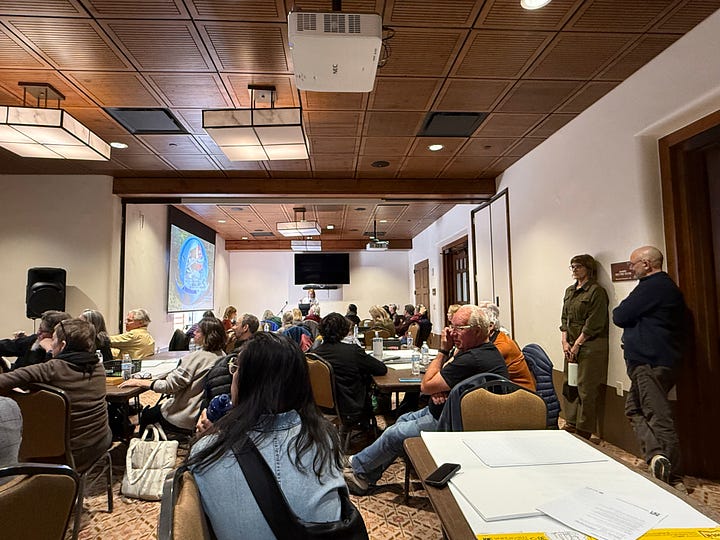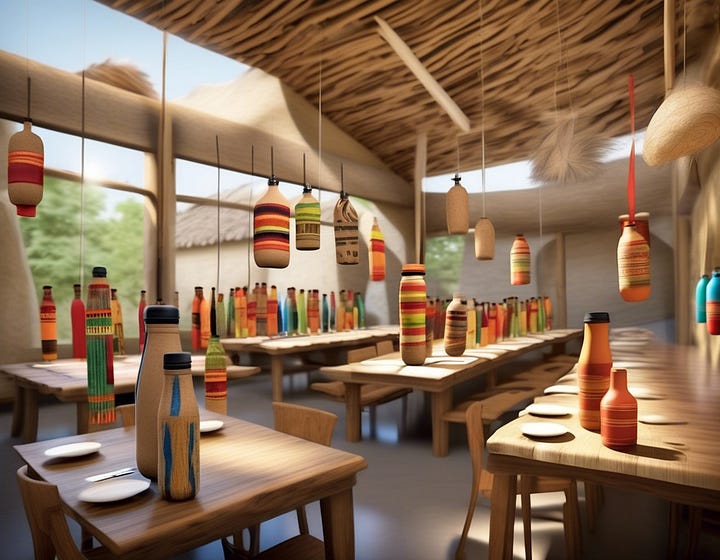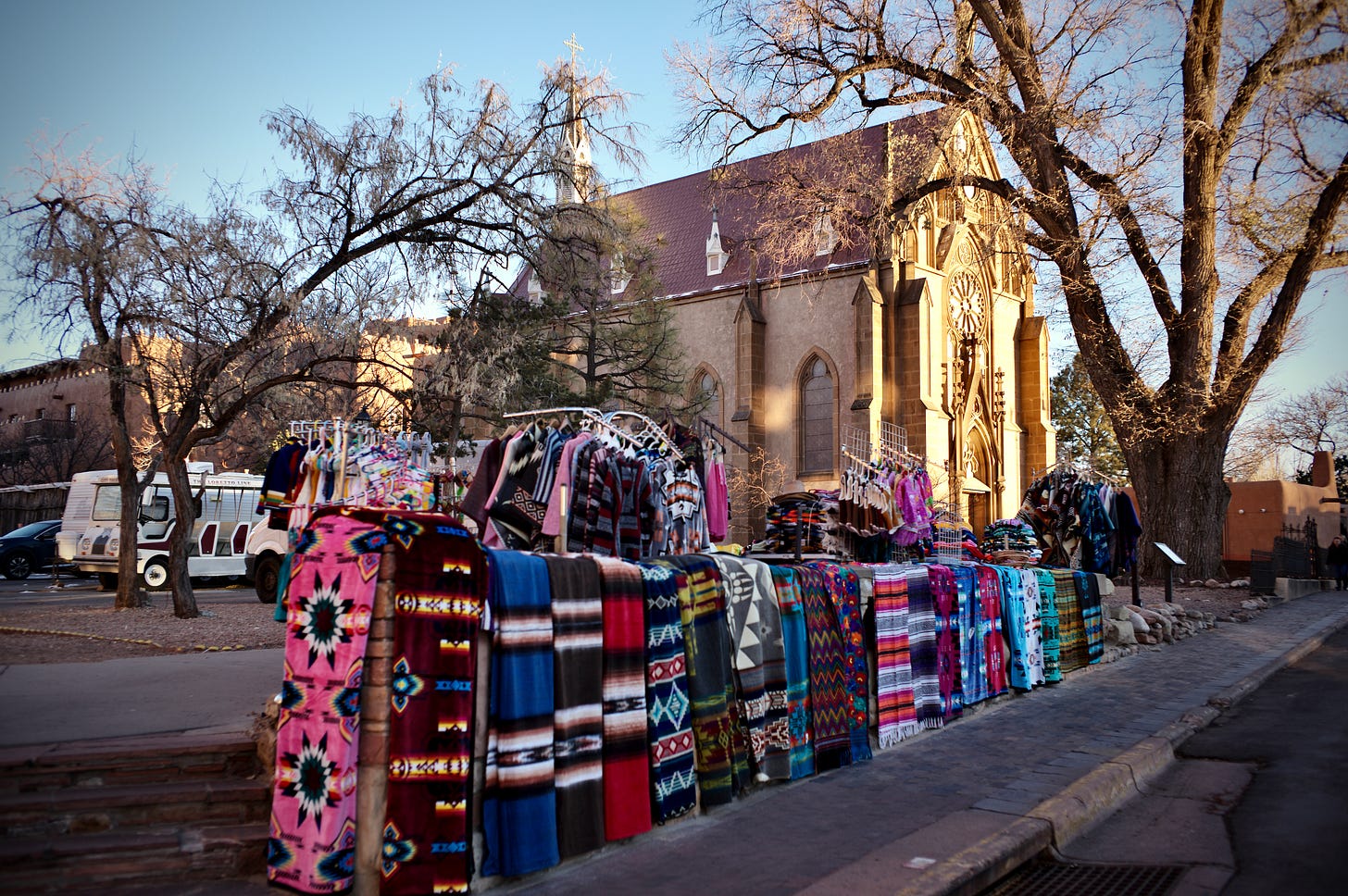
Borders and boundaries—words often linked to geopolitics and mental health—are ubiquitous these days. However, sharp divisions are at odds with our nuanced realities. Simplistic narratives of political and media discourse do not play well with the “mushy middle” of everyday life.
The trap of binary thinking looms large in a new era defined by trade wars, cultural skirmishes, and blunt political rhetoric. Yet, rigid distinctions between people and places may be rarer than assumed and best reserved for instances of legitimate conflict or injustice.
It may seem counterintuitive to suggest that the divisions we perceive are less prevalent than they appear. With daily news of tariffs between neighbors and other blunt-edge, DOGE-ish solutions, propositions not bounded by blunt edges may make little sense at first glance.
Why? Seemingly insurmountable polarities are everywhere. But with a change in focus, polarities can melt away. Upon closer examination, we can see that reality is far more interconnected and layered than a cursory glance might suggest.
I’ve written several times about seeking solace in—and lessons learned from—New Mexico places. Whether in messages from the ruins of Pecos Pueblo, the Civil War battlefield at Glorieta Pass, paired January images that defy classification, or the blended landscapes of Route 66 history, I always conclude that we should see vernacular natural and human landscapes in ever-resilient shades of gray.
Two recent examples of place-based learning in Santa Fe show that buried traditions will survive, and “used futures” are not inevitable.
The following examples allow me to keep my eye on the prizes of resilience and “this too shall pass,” which I addressed earlier this month.
The Irony of Assumed Divisions
I saw cultural fluidity—beyond the traditional and borderless Indigenous-Hispano-Anglo blending for which the region is well known—in a lecture I attended yesterday at the School of Advanced Research (SAR) and in other lectures and readings.
Hundreds of years ago, Jewish traditional practices survived the Spanish Inquisition—and migrated, inter alia, to the American Southwest. Crypto-Jews in New Mexico outwardly adopted Catholicism while secretly preserving their cultural practices. Over time, their ancestors had little more than muscle memory of why they indulged in six-sided stars, separate dishes, Friday night candles, and more.
Their existence challenges rigid concepts of identity, embodying a complex hybrid of beliefs that no one should categorize as “either/or.”
Yesterday, at SAR, Professor Emerita Alma Gottlieb of the University of Illinois (a part-time Santa Fe resident) made the compelling point that borders and assumed divisions between affinity groups often represent false dichotomies. The history of Crypto-Jews also shows that migrants are frequently complex hybrids, not at all what or who they seem to be. The mixed blessing and tragedy is that persecution led to concealment and eroded awareness, and only their practices survived.
Avoiding ‘Used Futures’
Last week, I participated in a visionary exercise sponsored by the Friends of Architecture Santa Fe. I saw how today’s climate change issues, lack of affordable housing, and community needs could alter a vision of Santa Fe 50 years from now.
Organizers challenged tables of attendees to envision new scenarios for the city, indirectly premised on the construct that I wrote about in February: Might the Santa Fe/Pueblo Revival style—so successful as an economic development, tourist generation, and livability approach at the turn of the twentieth century—avoid obsolescence?


The exercise encouraged participants to adopt alternative narratives in which traditional constructs are seen as potentially “used futures,” no longer serving their original purposes. This bottom-up approach empowered community members to collaboratively shape their environment, moving beyond the imposition of more inflexible, top-down solutions that often fail to resonate with the nuanced “mushy middle” described above.
The exercise—to be the subject of a public exhibit in June—acknowledged the cultural blending inherent in the Pueblo Revival style, drawing from native Pueblo architecture and Spanish overlays to create a regional aesthetic. Yet collaboratively, it invited alternative futures, which in my table’s case emerged as “ReFlow,” a cooperative live-work community devoted to using Indigenous materials in water resource management.
The Nonsense of Polarities
By analogy, New Mexico shows interconnections that pundits often overlook. The merger of Indigenous, Hispano, and Anglo traditions is readily apparent in art, cuisine, language, and community. Richness emerges when cultures converge.
Unfortunately, the current political and media landscapes seem premised on polarities, reinforcing false dichotomies with simplified narratives. Political debates become battlegrounds framed as “with or against” borders and boundaries.
Why relegate nuanced, place-based observation to the margins when lessons learned offer a powerful counternarrative to polarities? In the “mushy middle,” cultures blend, traditions evolve, and communities find ways to collaborate by deconstructing rigid boundaries.






